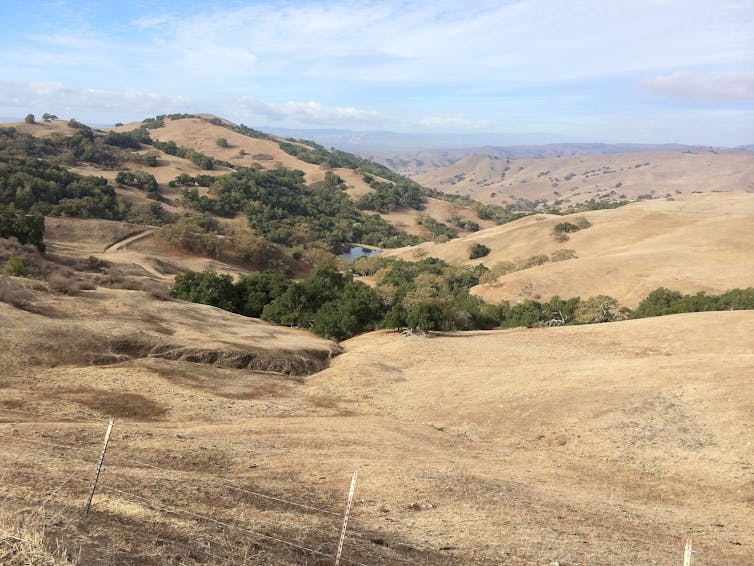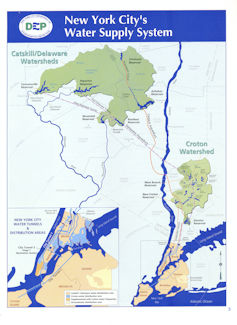Lucas Alejandro Garibaldi, Universidad Nacional de Rio Negro; Claire Kremen, University of British Columbia; Erle C. Ellis, University of Maryland, Baltimore County, and Sandra Díaz, Universidad de Córdoba (Argentina)
The Research Brief is a brief take about fascinating tutorial work.
The huge concept
Restoring native habitats to at the very least 20% of the world’s land at the moment being utilized by people for farming, ranching and forestry is critical to guard biodiversity and gradual species loss, based on a newly published study conducted by a team of environmental scientists together with us. Our evaluation discovered that this may be executed in ways in which minimize trade-offs and might even make farms more productive by serving to to manage pests, enhancing crop pollination and stopping losses of vitamins and water from soil. These working landscapes can nonetheless be grazed, mowed, harvested or burned, so long as these actions maintain or restore native species variety.
So-called “zero-net-loss policies” would forestall any additional destruction or conversion of untamed lands on developed property. There are inventive and experimental choices for probably the most closely cultivated areas, resembling incorporating strips of prairie plants into crop fields across the U.S. Midwest or planting flower strips to restore pollinators in Switzerland.
Only 38% of the 82 nations we reviewed have nationwide legal guidelines requiring native habitat on working lands. Most had been in Europe and required that simply 5% be saved wild. In many nations solely forest habitats are regulated, whereas grasslands and other extremely threatened landscapes are ignored. These choices are pushed by politics, economics and cultural values, however total they lack clear scientific pointers.

Why it issues
Restoring habitat creates properties for wildlife, nevertheless it additionally contributes to human well-being and helps all life on Earth. Native vegetation prevents erosion and purifies the water we drink and the air we breathe. It sequesters carbon, mitigating local weather change, and acts as a buffer in opposition to flooding, landslides and storms. The wildlife species that transfer in might pollinate crops or management pests.
For greater than a century, conservationists have labored to save threatened species by defending them inside massive national parks and refuges. This clearly hasn’t been sufficient: The Earth is shedding plants and animals at greater than 100 occasions the conventional charge, in what some scientists imagine is the Earth’s sixth mass extinction event.
[The Conversation’s newsletter explains what’s going on with the coronavirus pandemic. Subscribe now.]
Under the 1992 Convention on Biological Diversity, a world treaty ratified by 196 nations, nations have pledged to preserve 17% of the planet’s land space in protected zones by 2020. So far, they’ve failed to meet that target. Now many conservationists are proposing an expanded effort that may preserve as a lot as 30% of land by 2030, and as a lot as half by 2050. Where will all this land come from?
With international land use increasing and turning into extra intensive and dominated by monocultures, there’s an pressing have to preserve and restore native species exterior of protected areas – inside landscapes managed for folks.

What’s subsequent
Though the advantages are many and there are quite a few profitable restoration fashions to attract upon, wild habitats proceed to be degraded, razed and eradicated.
Preventing, stopping and reversing the degradation of ecosystems can be a necessary technique for assembly United Nations Sustainable Development Goals and commitments for the U.N. Decade on Ecosystem Restoration that launches subsequent yr.
Critical coverage alternatives are simply forward. Europeans are actually deciding how a lot agricultural land to dedicate to “landscape and habitat features.” New conservation targets shall be a part of the post-2020 global biodiversity framework negotiated at subsequent spring’s 15th meeting of the Convention on Biological Diversity. Its formidable international imaginative and prescient is nothing lower than “living in harmony with nature” by 2050.
Lucas Alejandro Garibaldi, Professor and Director, Institute for Research in Natural Resources, Agroecology and Rural Development, Universidad Nacional de Rio Negro; Claire Kremen, Professor of Resources, Environment and Sustainability and Professor of Zoology, University of British Columbia; Erle C. Ellis, Professor of Geography and Environmental Systems, University of Maryland, Baltimore County, and Sandra Díaz, Professor of Community and Ecosystem Ecology, Universidad de Córdoba (Argentina)
This article is republished from The Conversation below a Creative Commons license. Read the original article.






